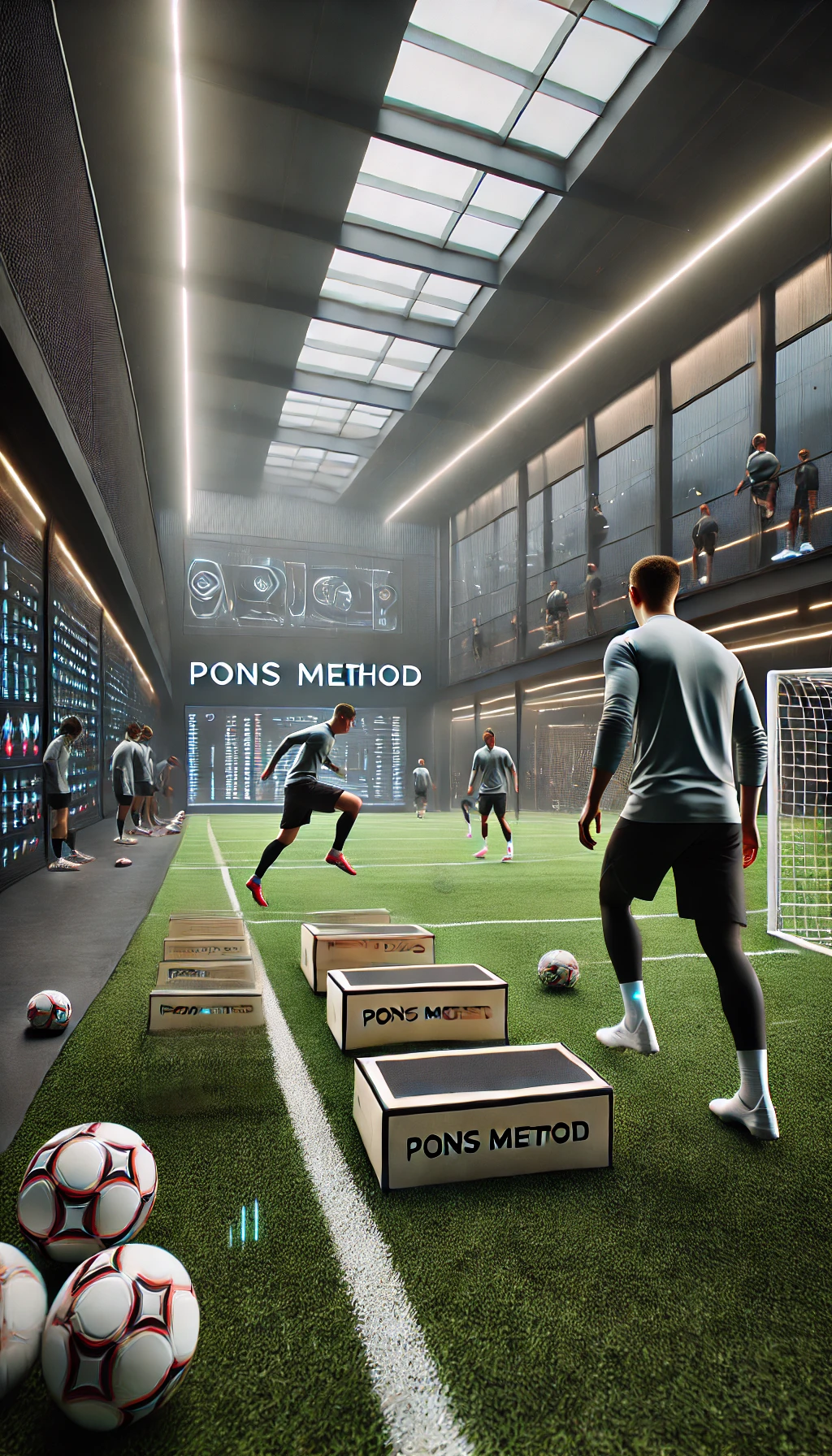Introduction
We live in an era where automation has transformed multiple aspects of our lives. From industry to artificial intelligence, we are optimizing processes to make them more efficient and predictable, allowing humans to focus their energy on more complex tasks. Football is no exception to this revolution. The automation of game patterns, both at a tactical and cognitive level, has become a key factor in improving performance and decision-making on the field.
The famous phrase “we must make what’s important really important” makes even more sense when we apply this principle to football training. If a player automates certain movements, he will free up his cognitive load to focus on what’s really relevant: decision-making, reading the game and tactical adaptation. The Pons Method understands this need and proposes a training structure based on the automation of football processes.
1. Why Automate the Game in Football?
Automation in football is based on the creation of predefined game patterns that players execute without having to consciously think about them. This reduces cognitive load and allows footballers to focus their attention on more complex strategic aspects.
🔹 Practical Example: A full-back who has automated his offensive and defensive routes does not need to “think” about where to position himself when his team has the ball or when to retreat in defence. This automatic response allows him to focus his mental energy on analysing the opponent’s positioning or anticipating passing lines.
Application in the Pons Method
The Pons Method introduces automation as an essential process in football training. Through repetitive exercises and tactical simulations, players learn to execute certain movements without conscious effort, optimising their performance in high-pressure situations.
2. Reducing Cognitive Load in Football
The human brain has a limit in its processing capacity. If a footballer has to think too much about every technical move, he will be overloading his cognitive system, reducing his ability to perceive the environment and make quick decisions.
🔹 Practical Example: A midfielder who has to worry about his body posture every time he receives a pass is wasting cognitive resources that could be used to read the opponent’s positioning and plan his next pass.
Application in the Pons Method
Training with the Pons Method seeks to optimize the player’s cognitive function. Through the fragmentation of training and the use of technological biofeedback, unnecessary tasks that consume mental energy are eliminated, allowing players to focus on what is really important: strategy and decision-making.
3. Automation of Offensive and Defensive Patterns
In football, there are offensive and defensive patterns that can be trained to the point of becoming automatic. Elite teams such as Guardiola’s Manchester City or Klopp’s Liverpool have perfected systems where players respond instinctively to different situations without the need to consciously think about them.
🔹 Practical Example: A team that works on high pressure in an automated way gets players to position themselves correctly and act in synchronization without wasting time thinking about how to move.
Application in the Pons Method
The Pons Method introduces the automation of game patterns through progressive and contextualized repetition. Scenarios are trained where players face the same tactical situations with variants, allowing their brain to store automatic responses that they can effortlessly execute in the real match.
4. Technology as an Ally of Automation
Technological advancement has allowed automation in football to not be limited only to movement patterns, but also to data analysis and cognitive training.
🔹 Practical Example: A team that uses tracking and data analysis systems can identify patterns of rival behavior and train automated responses to them.
Application in the Pons Method
The use of artificial intelligence and big data is part of the Pons Method methodology. Analysis tools are used to help players internalize game patterns through data analysis and advanced visualization, allowing them to react faster on the field.
5. Automation as a Key to High Performance
Elite footballers have reached a point where most of their technical and tactical actions are automated, allowing them to focus on strategy and reading the game.
🔹 Practical Example: Lionel Messi doesn’t “think” about how to dribble; he just does it. His brain has already automated the movement, allowing him to focus his attention on the positioning of his opponents and the execution of the play.
Application in the Pons Method
Training based on the Pons Method ensures that players reach an optimal level of automation, eliminating unnecessary effort and enhancing their decision-making ability. The fragmentation of training and work in repetitive tactical scenarios makes players develop automatic responses without losing tactical flexibility.
Conclusion
Automation is here to stay in football. As in other areas, eliminating unnecessary cognitive load allows mental resources to be focused on what is really important. Automating movements, tactical patterns, and responses to different situations not only improves the speed of play, but also reduces errors and optimizes decision-making.
The Pons Method understands that modern football requires players capable of acting without thinking about mechanical aspects, but with total control over tactics and strategy. Through the automation of training and the use of advanced technology, this method allows players to be smarter, faster, and more efficient on the field.
⚡ Final Reflection: In a world where automation optimizes processes across the board, are we automating football enough for our players to focus on what really matters?
This article reinforces the importance of automation in football and how the Pons Method implements it in modern training. Do you want to develop specific exercises to automate game patterns in your team? 🚀⚽









Leave a Reply